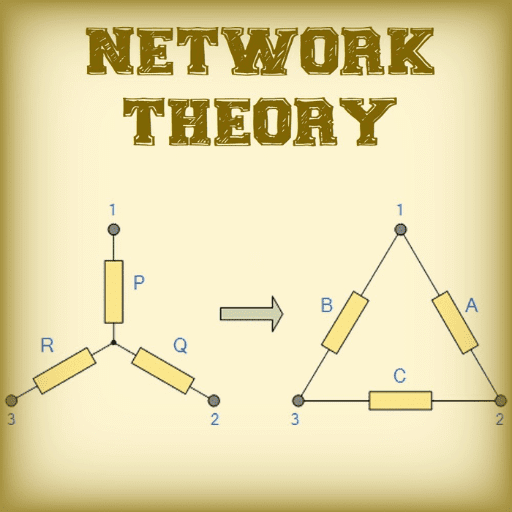Best Study Material for Class 6 Exam
Class 6 Exam > Class 6 Notes > Class 6 Science: Sample Question Paper - 3
Class 6 Science: Sample Question Paper - 3 PDF Download
| Download, print and study this document offline |
Please wait while the PDF view is loading
Page 1 (1/3) SCIENCE Time : 3 hrs. Class VI M.M.: 100 Date – 13.09.2016 General Instructions : • Read the questions carefully. • Draw neat and labelled diagrams wherever necessary. • Attempt the questions in serial order. • Question no. 8 (b) is a value based question and is compulsory to attempt. Q.1 Fill in the blanks. (1×6=6) i) Electrons revolve round the _____ in an atom. ii) The constituents of a _____ can be separated by physical means. iii) A _____ is something which produces a response or reaction in a living being. iv) The protective covering on the trunks of trees is called _____. v) A liquid that dissolves other substances is called a _____. vi) The movement of the earth about its axis is an example of _____ motion. Q.2 Choose the correct option in each of the following. (1×6=6) i) Which of the following is not opaque? a) wood b) frosted glass c) iron d) card board ii) Mercury melts at -39 0 C and boils at 357 0 C. Ordinarily it will exist in the a) solid state b) liquid state c) gaseous state d) none of these iii) Vitamins and minerals are - a) tissue-building nutrients b) energy rich nutrients c) protective nutrient d) none of these iv) Which of the following methods would you use for separating iron from sulphur particles ? a) magnetic separation b) filtration c) churning d) distillation v) Green plants make their own food, so they are called a) autotrophs b) heterotrophs c) auto nutrients d) heterophytes vi) The male parts of the flower are called - a) pistils b) carpels c) stamens d) styles Q.3 Draw a neat and labelled diagram of the following. (any two) (3×2=6) a) Structure of Carbon atom b) Decantation c) Filtration d) Separating funnel Page 2 (1/3) SCIENCE Time : 3 hrs. Class VI M.M.: 100 Date – 13.09.2016 General Instructions : • Read the questions carefully. • Draw neat and labelled diagrams wherever necessary. • Attempt the questions in serial order. • Question no. 8 (b) is a value based question and is compulsory to attempt. Q.1 Fill in the blanks. (1×6=6) i) Electrons revolve round the _____ in an atom. ii) The constituents of a _____ can be separated by physical means. iii) A _____ is something which produces a response or reaction in a living being. iv) The protective covering on the trunks of trees is called _____. v) A liquid that dissolves other substances is called a _____. vi) The movement of the earth about its axis is an example of _____ motion. Q.2 Choose the correct option in each of the following. (1×6=6) i) Which of the following is not opaque? a) wood b) frosted glass c) iron d) card board ii) Mercury melts at -39 0 C and boils at 357 0 C. Ordinarily it will exist in the a) solid state b) liquid state c) gaseous state d) none of these iii) Vitamins and minerals are - a) tissue-building nutrients b) energy rich nutrients c) protective nutrient d) none of these iv) Which of the following methods would you use for separating iron from sulphur particles ? a) magnetic separation b) filtration c) churning d) distillation v) Green plants make their own food, so they are called a) autotrophs b) heterotrophs c) auto nutrients d) heterophytes vi) The male parts of the flower are called - a) pistils b) carpels c) stamens d) styles Q.3 Draw a neat and labelled diagram of the following. (any two) (3×2=6) a) Structure of Carbon atom b) Decantation c) Filtration d) Separating funnel (2/3) Q.4 Define the following terms. (any five) (2×5=10) a) Tissue b) Rectilinear – motion c) Herbivore d) Saturated solution e) Classification f) Excretion Q.5 Match the following. (1×6=6) a) Grass i) Iodine b) Milky liquid (milkweed) ii) Metal c) Glucose solution iii) Sink in water d) Iron-nail iv) Parallel venation e) Goitre v) Homogenous solid liquid solution f) Mercury vi) Plant waste Q.6 Answer the following questions in one word. (any six) (1×6=6) a) Materials which can be drawn into wires. b) A method by which stones can be separated from rice c) Name a root which stores food. d) An alloy (example) e) Structural unit of an organism. f) Deficiency disease caused due to lack of vitamin D. g) The practice of keeping bees. Q.7 Answer the following questions in not more than 20 words. (any 6) (2×6=12) i) Quite often, a body has two types of motion at the same time. Give one example of this. ii) Why are the leaves of cacti modified into spines? iii) Mention two stimuli that plants respond to. iv) How is cream obtained from milk? v) What are carbohydrates made of ? What are its function? vi) Name two objects with rough surface and two objects with smooth surface. vii) What is the role of proteins in our body? Q.8 (i) Answer the following questions in not more than 40 words. (any five) (3×6=18) (ii) Part (b) is compulsory. (value based question) a) Name two metals. Mention two characteristics of it. b) What is a balanced diet? What should it contain? c) How will you know whether a substance is miscible or immiscible with water ? Give one example of each type. d) What is respiration ? e) Animals grow until a particular size, but plants grow all their lives. Explain this statement. f) What functions does the stem perform? g) What is the difference between circular and rotational motion. Give one example. Page 3 (1/3) SCIENCE Time : 3 hrs. Class VI M.M.: 100 Date – 13.09.2016 General Instructions : • Read the questions carefully. • Draw neat and labelled diagrams wherever necessary. • Attempt the questions in serial order. • Question no. 8 (b) is a value based question and is compulsory to attempt. Q.1 Fill in the blanks. (1×6=6) i) Electrons revolve round the _____ in an atom. ii) The constituents of a _____ can be separated by physical means. iii) A _____ is something which produces a response or reaction in a living being. iv) The protective covering on the trunks of trees is called _____. v) A liquid that dissolves other substances is called a _____. vi) The movement of the earth about its axis is an example of _____ motion. Q.2 Choose the correct option in each of the following. (1×6=6) i) Which of the following is not opaque? a) wood b) frosted glass c) iron d) card board ii) Mercury melts at -39 0 C and boils at 357 0 C. Ordinarily it will exist in the a) solid state b) liquid state c) gaseous state d) none of these iii) Vitamins and minerals are - a) tissue-building nutrients b) energy rich nutrients c) protective nutrient d) none of these iv) Which of the following methods would you use for separating iron from sulphur particles ? a) magnetic separation b) filtration c) churning d) distillation v) Green plants make their own food, so they are called a) autotrophs b) heterotrophs c) auto nutrients d) heterophytes vi) The male parts of the flower are called - a) pistils b) carpels c) stamens d) styles Q.3 Draw a neat and labelled diagram of the following. (any two) (3×2=6) a) Structure of Carbon atom b) Decantation c) Filtration d) Separating funnel (2/3) Q.4 Define the following terms. (any five) (2×5=10) a) Tissue b) Rectilinear – motion c) Herbivore d) Saturated solution e) Classification f) Excretion Q.5 Match the following. (1×6=6) a) Grass i) Iodine b) Milky liquid (milkweed) ii) Metal c) Glucose solution iii) Sink in water d) Iron-nail iv) Parallel venation e) Goitre v) Homogenous solid liquid solution f) Mercury vi) Plant waste Q.6 Answer the following questions in one word. (any six) (1×6=6) a) Materials which can be drawn into wires. b) A method by which stones can be separated from rice c) Name a root which stores food. d) An alloy (example) e) Structural unit of an organism. f) Deficiency disease caused due to lack of vitamin D. g) The practice of keeping bees. Q.7 Answer the following questions in not more than 20 words. (any 6) (2×6=12) i) Quite often, a body has two types of motion at the same time. Give one example of this. ii) Why are the leaves of cacti modified into spines? iii) Mention two stimuli that plants respond to. iv) How is cream obtained from milk? v) What are carbohydrates made of ? What are its function? vi) Name two objects with rough surface and two objects with smooth surface. vii) What is the role of proteins in our body? Q.8 (i) Answer the following questions in not more than 40 words. (any five) (3×6=18) (ii) Part (b) is compulsory. (value based question) a) Name two metals. Mention two characteristics of it. b) What is a balanced diet? What should it contain? c) How will you know whether a substance is miscible or immiscible with water ? Give one example of each type. d) What is respiration ? e) Animals grow until a particular size, but plants grow all their lives. Explain this statement. f) What functions does the stem perform? g) What is the difference between circular and rotational motion. Give one example. (3/3) Part (b) value based question. Nita’s mother fell ill and the doctor diagnosed her with anaemia. She felt lethargic and did not have energy to do work. Nita helped her mother in household work till she recovered and also gave her pulses, meat, leafy vegetables and eggs which were lacking in her diet. Answer the following questions based on the above information. a) Name the mineral / vitamin whose deficiency causes anaemia. b) What changes do you think the doctor might have made to her diet? c) Mention the values shown by Nita. Q.9 Answer the following questions in not more than 100 words. (any 5) (5×5=25) i) Draw a well labelled diagram of a leaf. What functions do the veins perform? Name the two types of venations in leaves. ii) Describe a simple experiment to show the distillation of water with diagram. iii) a) Give one example of solid-liquid homogenous & hetrogenous mixture. b) How would you separate a mixture of sand and iron filings? iv) a) Name one hard and one soft solid. b) What do you mean by a solute and a solvent? v) a) Why is glucose given to sports persons? b) Why is it important to include roughage in our diet? vi) Describe how the fundamental particles are arranged in the atom. vii) What is energy? Explain with three examples. Q.10 Carefully observe the diagram given below and answer the following questions. i) Label the parts from 1 to 6. ii) Write the name of female part of the flower. iii) Which part will later develop into seeds. (3) (1) (1)Read More
FAQs on Class 6 Science: Sample Question Paper - 3
| 1. What is the importance of sample question papers for Class 6 Science? |  |
| 2. How can sample question papers help in exam preparation? |  |
Ans. Sample question papers provide students with a clear idea of the format and structure of the actual exam. By solving these papers, students can get familiar with the types of questions that can be asked, the marking scheme, and the time duration. It helps them in practicing different concepts, revising important topics, and improving their overall performance in the exam.
| 3. Are sample question papers for Class 6 Science available online? |  |
Ans. Yes, sample question papers for Class 6 Science are available online. Many educational websites, exam preparation platforms, and official educational boards provide these papers for students to download and practice. These papers are easily accessible and can be a valuable resource for exam preparation.
| 4. How can solving sample question papers help in improving grades? |  |
Ans. Solving sample question papers regularly can help students in improving their grades. It allows them to understand the exam pattern, identify the areas where they need improvement, and work on them. By practicing different types of questions, students can enhance their problem-solving skills and gain confidence in tackling the actual exam. Regular practice of sample papers also helps in time management during the exam, which can result in better grades.
| 5. Can solving sample question papers guarantee success in Class 6 Science exam? |  |
Ans. Solving sample question papers is a helpful tool for exam preparation, but it does not guarantee success. While practicing these papers can improve knowledge and confidence, success in the exam also depends on other factors such as regular studies, understanding of concepts, and effective revision. It is important to use sample question papers as a supplement to regular studies and focus on a comprehensive preparation strategy to increase the chances of success in the Class 6 Science exam.
Download as PDF
Top Courses for Class 6
Related Searches




























